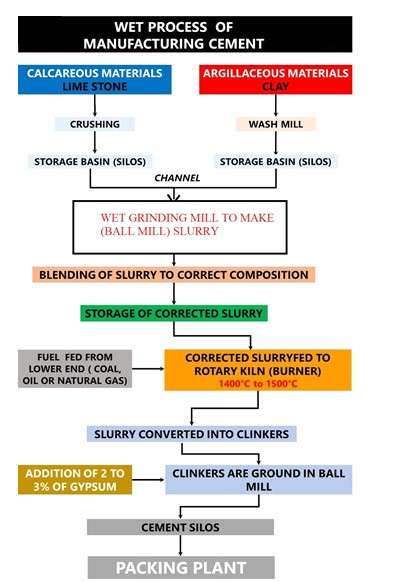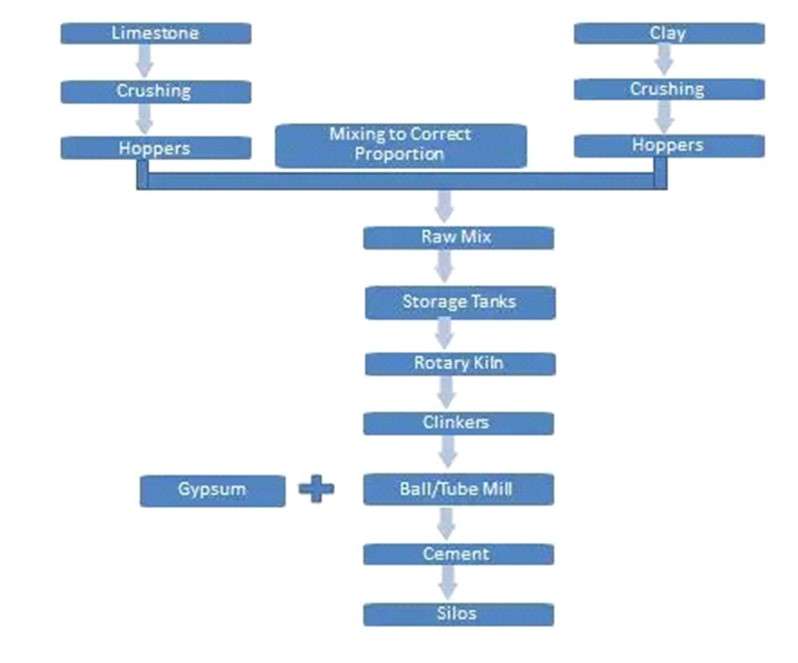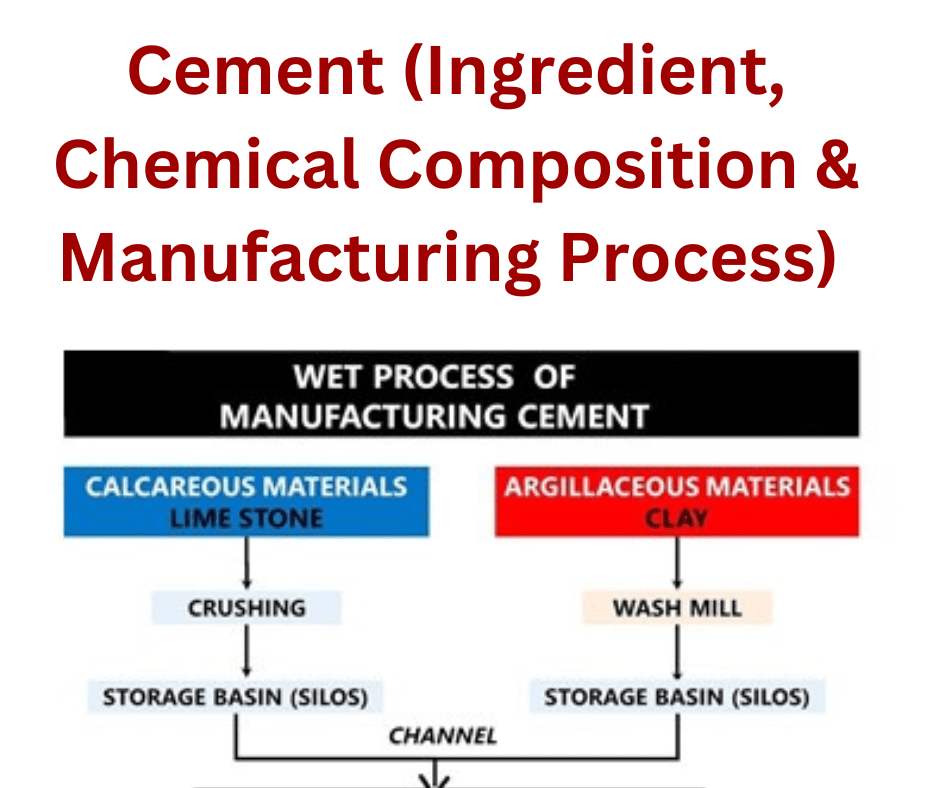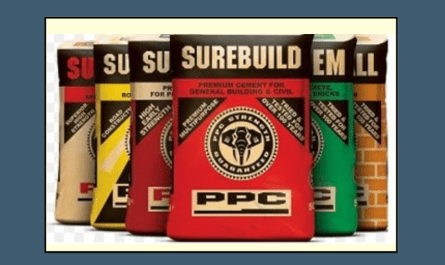CEMENT
The history of cementing material is as old as the history of Engineering construction. Some kind of cementing materials where materials were used by Egyptians, Romans and Indians in their ancient construction.
It believed that the early Egyptians mostly used cementing materials, obtained by burning gypsum.
INGREDIENTS OF CEMENT
CHEMICAL COMPOSITION
The Chemical Composition of different elements are listed below are:
- Cao : 60-67%
- SiO2: 17-25%
- Al2O3 : 3-8%
- Fe2 03 :05-6%
- Mgo : 0.1 -4 %
- Alkali (Na₂o, K2o) : 0.4-1.3%
- S03 : 1.3 – 3.0 %
All the above materials are together mixed to form slurry (when added water) and the processing of heating, drying occurred finally clinker’s are formed. Add 3-5% of Gypsum to its clinker and grind finally will get a fine powder.
This powder is called as ordinary Portland Cement (OPC)
MANUFACTURING OF PORTLAND CEMENT:
There are mainly 2 methods of Manufacturing of cement.
1. Wet Process
2. Dry Process
The Normal process of cement manufacturing is discussed below then a detailed description about the two processes is explained.
Lime stone ——- Clay Water———Storage Basins—- Wet grinding mills to make Selvy ← Storage Basins——Blending of Slurry to correct composition——Storage of Corrected Slurry————Powdered Coal, oil or gas ——-Corrected Slurry fed to Rotary kiln———Slurry converted into clinker—– Addition of 2 to 3 % of Gypsum —–Clinker is ground in ball mill——Cement Silos——–Packing Plant
Wet Process require more fuel as the moisture content of mixed materials is about 35-50% wed
WET PROCESS

- Limestone brought from quarries has crushed into small fragments.
- These taken into a Ball mill or tube mill where it is mixed with clay or Shale and ground to a fine consistency of slurry with 35-50 % of water.
- ROTARY KILN is a important component of a cement factory 3 to 8 m, L= 30- 200m. Lined with Refractory materials. Kiln is mounted on roller bearing and capable of rotating about in own axis.
- Slurry has been sprayed on hot surface of flexible Chain losses moisture and becomes flakes.
- Flakes peel off and fall on the floor.
- Rotation of rotary Kiln causes the flakes to move from upper end towards the lower end of the kiln subjecting itself to higher and higher temp. from the bottom of the kiln to a max temperature to 1500 °c- 1600 °c
- At this moment of processing Lime, Silica and alumina get recombined.
- Chemical reactions take place and Finally We found modular form of 3mm to 20mm Size which is known as Clinker.
- The clinker is cooled under controlled conditions and Stored in Silo’s or Bind.
2.Dry Process

- This method is used when the raw materials are very Hard.
- Raw materials crushed dry and fed in correct proportions into a grinding Mill dry and Fed in where they are dried and reduced into a fine powder.
- Dry powder is called as Raw Meal is Further blended and corrected for its right composition and mixed by means of compressed air.
- The blended Meal is further Sieved and fed into a rotary disc called Granulator.
- Water of 12% by weight is added to make blended meal into pellets.
- This is done to permit air flow for exchange of heat but further chemical reactions and Conversion of the same into the clinker further in the Rotary kiln.
- The equipment used is comparatively smaller and the process is Quite economical.
- Total consumption of fuel is for producing a ton of Cement?
- Dry Process-100 kg
- Wet process -350 kg
- The Strength of cement are Considerably Influenced by the Properties of cement and cooling Rate of Clinker.



